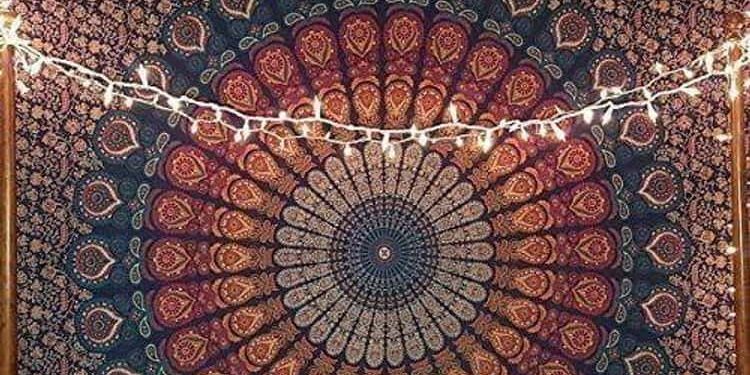Introduction:
Embroidered artwork is a type of woven material that has been around for a long time. It is usually made on an up-loom. This is done by winding around, which conceals all twist strings. This is not the case for fabric winding around where twist and strings may remain visible after the piece is completed. The embroidery is an artistic expression that has a close connection to painting. It is a pictorial craft and often done for a large scope.
Aside from the fact that a lot of the most beautiful embroidered artworks were created by eminent painters, it seems there is no way to deny the creative possibilities of woven art.
But embroidery workmanship was often ignored because many people saw it as a simple copy of canvases or as part of their interior furnishings. Workmanship history specialists dismissed this most expensive and depleting of make for a very long time.
A Hanging Art – A Detail of Tapestry Art’s Classic History
For millennia, woven artworks were used for various reports on embroidery workmanship that dates back to Hellenistic times.
However, the actual creative potential of the woven artwork was only realized in the middle of fourteenth century AD, when the main wave of inventive creation took place in Germany and Switzerland. The specialty grew over time to France and the Netherlands. Strangely, though, the basic tools for weaving artwork were largely the same throughout the years.
The French Revolution was a significant setback for improving embroidery artwork craftsmanship. During this time, endless embroidered works were singed to recover the gold string that was often woven into them. William Morris, who is currently considered one of the most important example craftsmen, revived embroidery artwork making in the nineteenth century. Morris and Co. produced incredible series for home and office purposes. The figures were made exclusively to go with Edward Burne-Jones’ kid’s shows.
Jean Lurcat, a French specialist in weaving art, was the main driver of new woven artworks of art created during the first century of the 20th century.
Tapestry: The Art of Making Tapestry
Contemporary Masters of Wall Tapestries
The power of the weaver as a craftsman is what distinguishes contemporary embroidery craftsmanship from its pre-1945 era. This pattern is rooted in France in the 1950s when Jean Lurcat (a sketch artist for Aubusson Tapestry studios) led a restoration by creating an embroidery series for a Biennial in Lausanne.
From that point onwards, embroidery became more prominent as experts focused their attention on exploring innovative developments using a variety of fibers. This style eventually led to the current practitioners[4] who are, unlike many of their ancestors in their field, highly respected by their peers.
These are the most visible of all winding around craftsmen. They are close to experts in material workmanship and those responsible for fiber methods. We will now examine the most compelling and engaging contemporary agents for embroidered artwork craftsmanship.
Gavin Turk’s Embroideries
Gavin Turk, a British craftsman, is one of the most interesting of the Young British Artists.
Turk’s work manages issues of character and vagueness, which he discusses with pioneer and vanguard. It is easy to see that Turk’s embroidery is not your average woven artwork grain.
Although he wasn’t initially interested in weaving artworks, Alighiero Boetti got Turk to follow his lead. Gavin Turk was inspired by the piece and made his Mappa del Mundo using road junk such as fresh bundles, drink jars, and cigarette packages. He delivered them into a two-layered world which could be secured by a divider.
Peter Blake and His Tapestry Wall Art
Peter Blake is known as the Godfather British Pop Art. He was responsible for designing the sleeves for the Beatles’ famous collection, Sgt. Pepper’s Lonely Hearts Club Band.
Although embroidery artwork is not his primary strategy for craftsmanship making, the craftsman showed his dominance by demonstrating his superiority over the conventional method. His woven artworks are almost identical to his other pieces to the extent their theoretical premise goes. They are a result of his fascination with American commercials, mainstream society, and woven artworks.
Blake’s works of art are rich in subtleties and bursting with characters. However, Blake’s woven artworks have surprising simplicity when it comes to shapes. They also know how to get the best out of Pop craftsmanship’s captivating visuals.
Grayson Perry, an Englishman, is known for his earthenware vessels and unique woven artworks. Perry’s pieces often feature old-style shapes and are decorated in stunning varieties. However, they are sometimes upsetting in the way that their substance is.
His most famous embroidered artwork, The Vanity of Small Differences is his most well-known series. It has a lot to say about governmental issues as well as how class influences the way we dress and enliven homes.
Six large-scale embroideries were created to investigate the British taste and class. Grayson Perry, meanwhile, proved why he was an admirable collector of Turner Prizes.


